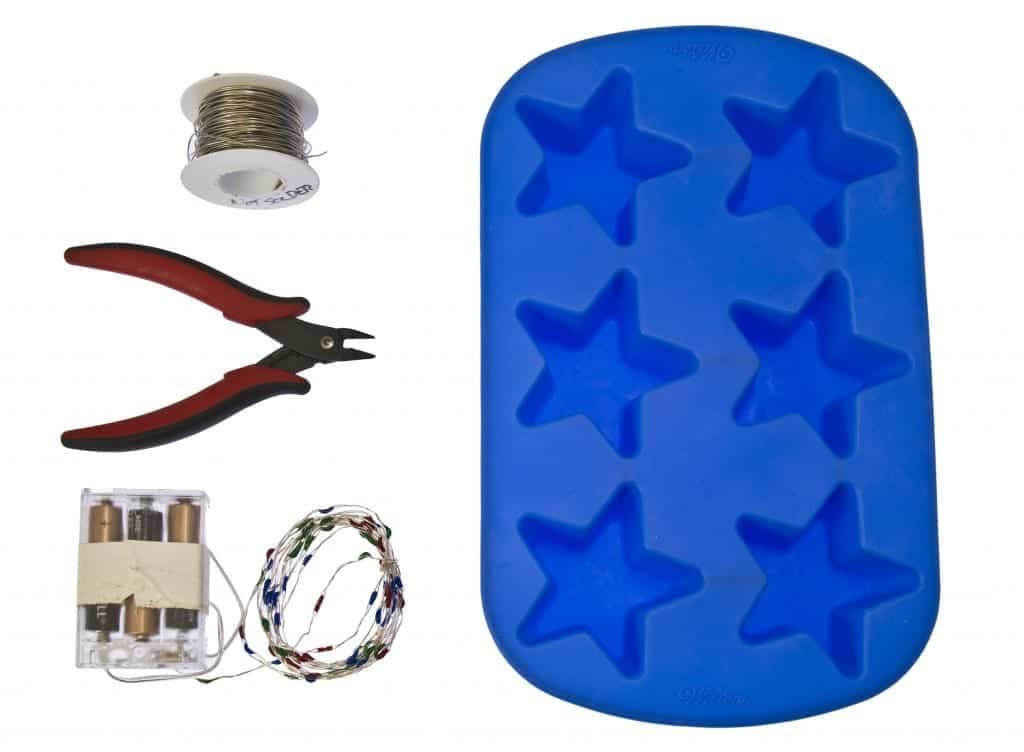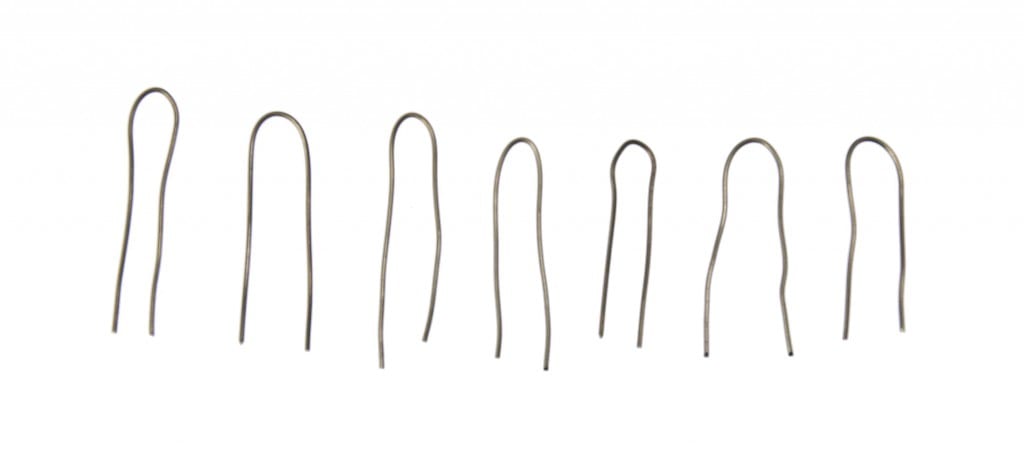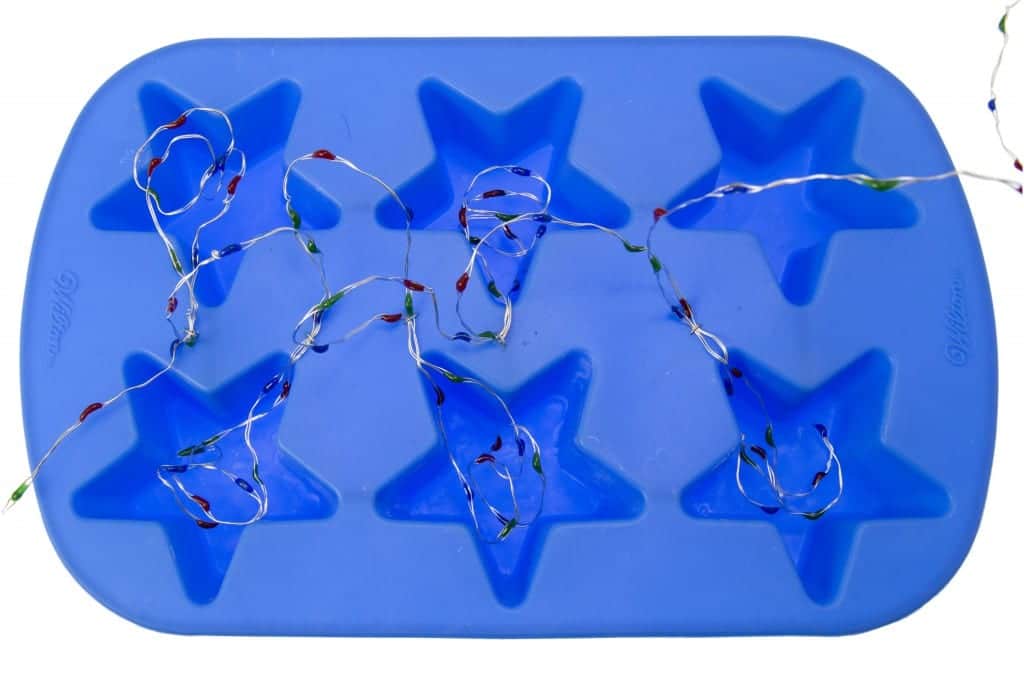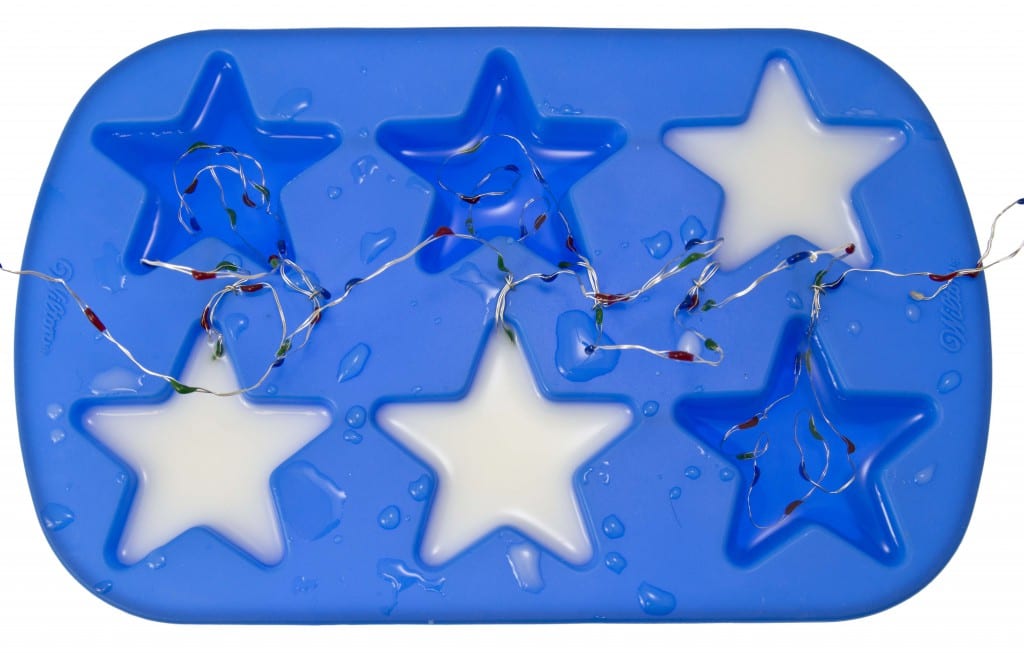From sparklebarf to foam, what else is new from the world of eSun 3D filaments?

Project (the day other than) Monday: Ice...
Inspired by the Ice Bulb published on Instructables, we decided to create our own version. Ice bulb suggests that we use a balloon to shape the ice and before it freezes, add an LED so that it can glow. Since we decided to use a whole bunch of LEDs (on a string), we opted to use a silicon brownie mold for multiple "bulbs" in less conventional shapes instead.
 If you decide to try this too, you will need wire cutters, wire, needle, silicone mold, and our 3 meter LED string of any colour (we chose a red-green-blue one). If you are wondering where to find the mold we used, you can find one at your local Michaels. If you can't find a silicone mold, you can try using a metal muffin tin instead but this could cause your ice cubes to crack when they freeze.
If you decide to try this too, you will need wire cutters, wire, needle, silicone mold, and our 3 meter LED string of any colour (we chose a red-green-blue one). If you are wondering where to find the mold we used, you can find one at your local Michaels. If you can't find a silicone mold, you can try using a metal muffin tin instead but this could cause your ice cubes to crack when they freeze.
 Step 1. Cut seven wire strips, about 2" long. They don't need to be good looking, this is just for holding the LED string down to prevent it from moving around and make sure it freezes in the right position. We found that none of the sticky materials like gaffers tape or packing tape actually stuck to silicone, not to mention holding something in place, so wire will work the best.
Step 1. Cut seven wire strips, about 2" long. They don't need to be good looking, this is just for holding the LED string down to prevent it from moving around and make sure it freezes in the right position. We found that none of the sticky materials like gaffers tape or packing tape actually stuck to silicone, not to mention holding something in place, so wire will work the best.
Step 2. Bend the wires into a U shape - better to do it beforehand than trying to hold the unruly LED string in place with one hand, wire cutters in other, needle in the third one, and the wire to cut in the fourth. You notice the tendency, right?
Step 3. Do some math to space your LEDs evenly on the string. We decided that we wanted a 5 LED space between our ornaments and on both ends. That means (90-(5 x 7 spaces=35))/6= 9 LEDs per cell.


Step 4. Count out your LEDs for the first cell and wrap them in a loose ball like shown. Hold them in place, make a lead hole in the silicone with a needle and pin the LED string down with your U-shaped wire. Twist it in the back to keep the wire locked in place.

Step 5. Continue until you fill all the cells with the LED string. Make sure to adjust the string so it sits nicely in each cell and does not touch the edges or stick out of the mold.


Step 6. Fill the mold with water: the string is water/weather resistant. If you want the light to be more uniform within the star, cloud some cells with milk or cream (add just a few drops).
Step 7. Now that all the stars are ready, stick them in the freezer for a few hours until they are solid ice. The battery pack should be fine in the freezer as well but just make sure that it isn't resting on anything wet. 
 Step 8. Take out your frozen goodies, power them on and enjoy!
Step 8. Take out your frozen goodies, power them on and enjoy!
You can also reuse the mold and make multiples - we made a red ornament as well. 
MORE POSTS
Just browsing through the results of the last PDXBot in Portland (if you ever get the chance, check it out - it's a quality gig). Anyways, I noticed that the Sumovore "Enterprise" entered by "Azalia Middle School comander" won 3rd place in the Amateur class! Well done!
Ok, ok - we've been getting requests (no; more like demands) that we offer a bit of a deal for getting the GM15's in pairs. Alright then. How does $30USD or $40Cdn a pair strike you? Ok, now let's see some nano-sumo robots! "Wot's this? A microcontroller at Solarbotics??" Yup. The Atmel ATMega8L is part […]
Boy, there's work to do on new websites. Link checking, spell checking, image links - all sorts of crap that doesn't have anything to do directly with robots! Even so, we've been able to put up a few new images of Mark Tilden's "Projectorbots" on the Photovores page. Yuck. Must do something about how hard […]
Solarbotics, Ltd. is not responsible for misprints or errors on product prices or information. For more information, please see our Terms and Conditions.
Warning: This product contains chemicals known to the State of California to cause cancer and birth defects or other reproductive harm.
Please visit www.P65Warnings.ca.gov for more information. This item was manufactured prior to August 31, 2018.

